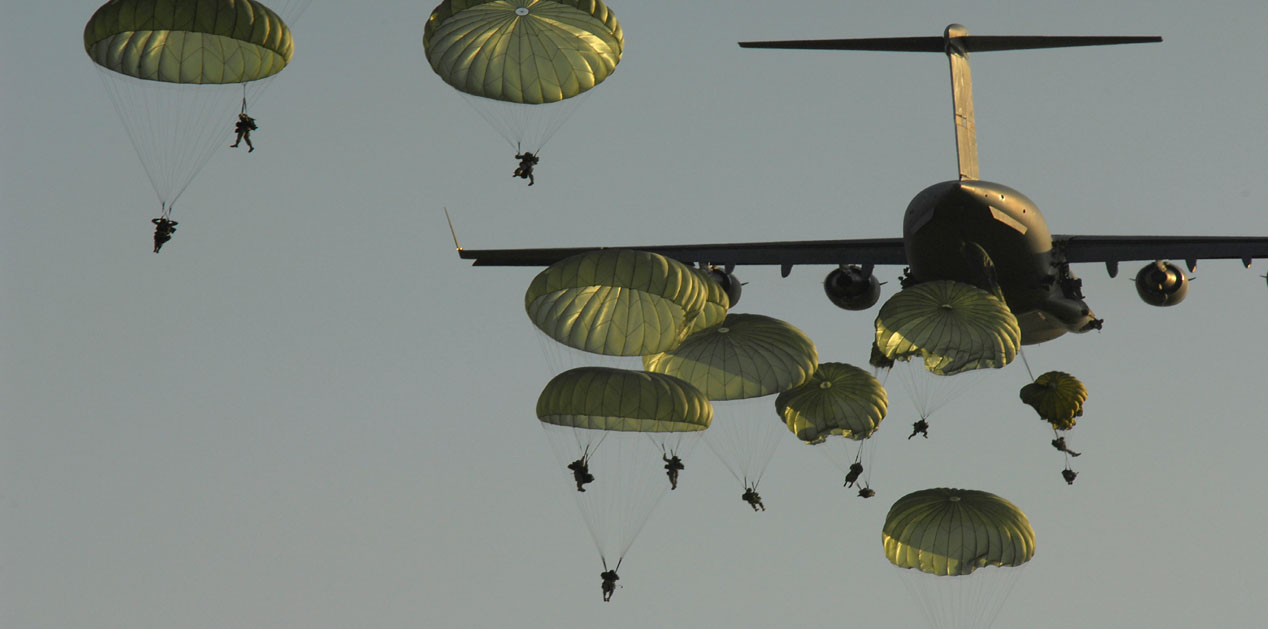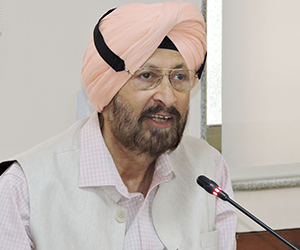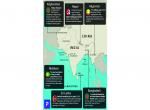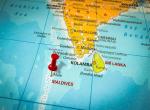China’s Military Assertiveness
China’s growing power and influence and its mounting military assertiveness are causing concern not only to India, but also to most other countries in the Indo-Pacific region. Referring to India’s relations with China while speaking at the Raisina Dialogue in New Delhi on January 17th, Prime Minister Narendra Modi said, “In the management of our relationship, and for peace and progress in the region, both our countries need to show sensitivity and respect for each other’s core concerns and interests.”
Foreign Secretary S. Jaishankar was more direct. Referring to plans to build the China-Pakistan Economic Corridor (CPEC) through Pakistan-occupied Kashmir (POK), without consulting India, the Foreign Secretary said, “China is very sensitive on matters concerning its sovereignty… so we would expect that they would have some understanding of other people’s sensitivity about their sovereignty.”
And, speaking in the same conference, Admiral Harry B. Harris, Commander-in-Chief, US Pacific Command, said the US and Indian navies have been sharing information about the movement of Chinese naval ships and submarines in the Indian Ocean. The Admiral, who is overseeing the US “pivot” or “re-balancing” of forces to the Indo-Pacific said, “We share the same view of China.”
Earlier, speaking at the first Raisina Dialogue on March 2, 2016, Admiral Harry Harris had called for quadrilateral Australia-India-Japan-US consultations for peace and stability in the Indo-Pacific region. He had said, “Together, we can develop a roadmap that leverages our respective efforts to improve the security architecture and strengthen regional dialogues. Together, we can ensure free and open sea lanes of communication that are critical for global trade and prosperity.”
Admiral Harris had also announced that the next set of naval exercises in the trilateral annual Malabar series, comprising India, Japan and the US, will be held in the northern Philippine Sea, close to the South China Sea. The Chinese perceive such efforts as attempts to gang up on them and, therefore, their reaction had been furious. Hong Lei, spokesperson of China’s Foreign Ministry, said, “We urge the US government to put some restraint on them (US commanders) and stop them from irresponsible sensationalisation and hyping up so as to avoid undermining regional peace and stability.”
Strategic Partnerships to meet the Challenge
China’s brazen violation of international norms in recent years, particularly its construction of military facilities on reclaimed islands in the South China Sea, and its growing military power, including maritime power, pose a growing strategic challenge to India and its strategic partners.
China senses the emergence of a security vacuum in the Indo-Pacific region and is rushing to fill it. China has quite clearly discarded Deng Xiaoping’s 24-character strategy to “hide our capacity and bide our time”. It has also dropped the phrase “peaceful rise” while referring to its military and economic growth. It should be obvious to perceptive observers that China’s rise is unlikely to be entirely peaceful.
China’s rapid economic growth has been fairly uneven and non-inclusive. There is a deep sense of resentment against the leadership of the Communist Party for the denial of basic freedoms and rampant corruption. The discontentment simmering below the surface could boil over and lead to an uncontrollable spontaneous implosion. David Shambaugh, a well-known China scholar is the latest to have jumped on to the China-may-implode bandwagon. The crash of Chinese stock markets over a year ago may have provided the first glimpse of impending implosion.
Also, given its recent belligerence, China could behave irresponsibly somewhere in the Indo-Pacific region. It could decide to intervene militarily in the South China Sea, or to occupy one or more of the disputed Senkaku/ Diaoyu islands that are at present controlled by Japan. Or, it may opt to resolve territorial and boundary disputes with its neighbours through the use of military force.
Though President Xi Jinping has denied the existence of plans to ‘militarise’ the South China Sea, surely China is not establishing radar stations and building air strips there to fly in Japanese tourists. That it has larger maritime ambitions as a rising power is apparent.
Both the contingencies have a low probability of occurrence, but will be high impact events with widespread ramifications if either of them comes to pass. The US, which is the leading provider of security in the Indo-Pacific, and India, will need strong partners to deal with the fallout and to manage the consequences. Hence, the India-US strategic partnership makes eminent sense as a hedging strategy for both countries. It is in this context that India and the US agreed on a joint strategic vision for the Indo-Pacific region during President Barack Obama’s visit to New Delhi in January 2015.
India has a long-standing territorial dispute with China. It has noted China’s growing military assertiveness in the region with consternation, especially China’s periodic deployment of PLA Navy submarines in the northern Indian Ocean. China has signed an agreement with Pakistan to invest US$ 46 billion to develop the CPEC from Xinjiang to Gwadar on the Makran Coast. Despite the fact that part of the CPEC will pass through POK, China has not consulted India.
Cooperative Security Framework
Though it will be a gradual and long-drawn process, a cooperative security framework may eventually emerge for peace and stability in the Indo-Pacific and for the security of the global commons – air space, space, cyber space and the sea-lanes of communication to enable the freedom of navigation and the free flow of trade. Together with the US and its other strategic partners, India must take the lead in establishing such a framework. If China is willing to join this security architecture, it should be welcomed.
The defence cooperation element of the Indo-US strategic partnership must be taken to the next higher trajectory to enable joint threat assessment; contingency planning for joint operations; sharing of intelligence; simulations and table-top exercises – besides training exercises with troops; coordination of command, control and communications; and, planning for deployment and logistics support. All of these activities will need to be undertaken in concert with other strategic partners such as Australia, Japan, Singapore, South Korea and Vietnam.
US leaders have expressed their support for India’s emergence as a major power several times in the last ten years. They have used phrases like the US is committed “to help India become a major world power in the 21st century” (briefing by US official after the visit of Secretary of State Condoleezza Rice, 2005); “India is not just a rising power, it has already risen” (President Obama, 2010).
Now US interlocutors express the thought that their government expects “India to become a net provider of security” in the region, but the expectations have not been stated in specific terms. When asked, US officials normally point to India joining international counter-terrorism and counter-proliferation efforts; sharing intelligence; upholding the rules and norms governing maritime trade; providing help to the littoral states to meet their security needs; helping to counter piracy and narcotics trafficking; and, continuing to taking the lead in humanitarian and disaster relief (HADR) operations in the region. These expectations are unexceptionable and India has already been contributing extensively to achieving these common goals.
Force Structure Necessary
India is gradually emerging as a dominant power in the Indo-Pacific and is preparing to discharge its regional responsibilities. In keeping with its rapidly growing strategic interests and regional responsibilities, India is likely to be increasingly willing to join its strategic partners to intervene militarily in its regional neighbourhood when the situation so demands. While India would prefer to do so with a clear mandate from the United Nations Security Council and under the UN flag, it may not be averse to joining ‘coalitions of the willing’ when its vital national interests are threatened and consensus in the Security Council proves hard to achieve.
Stemming from the need for contingency planning, particularly in support of its forces deployed for United Nations (UN) peace-keeping and peace-support duties and for limited power projection, India will need to raise and maintain in a permanent state of quick-reaction readiness adequate forces to participate in international coalitions in India’s area of strategic interest.
The late General K Sundarji, former COAS, had often spoken of converting an existing infantry division to an air assault division by about the year 2000. Though the idea was certainly not ahead of its time, the shoestring budgets of the 1990s did not allow the army to give practical impetus to implement the concept. Now the time has come to translate his vision into reality.
Lt Gen Vinay Shankar (Retd) has written, “Some years ago the army had drawn up an approach paper projecting the requirement of two air-mobile divisions… This is now a definite requirement and the proposal ought to be followed up.” Other analysts are also of the view that India needs to put in place a fairly expansive expeditionary capability. In Bharat Karnad’s view, “At the very least, a genuine expeditionary force would have to comprise two division equivalent forces, increasing over time to 5-6 division equivalents for distant employment…”
There is a definite requirement to raise two rapid reaction divisions (RRDs) with inbuilt air assault and amphibious operations capabilities over the next ten years (2017-27). Alternatively, two existing infantry divisions could be converted to RRDs. (Whether new divisions should be raised or existing divisions converted is an assessment that will depend on the findings of a Strategic Defence Review.)
Both the RRDs must be given integral firepower, combat service support, logistics and C4I2SR capabilities and should be capable of undertaking conventional as well as intervention operations for 15 to 20 days on a self-contained basis with limited daily replenishment.
A permanent tri-Service headquarters equivalent to a Corps HQ should also be raised under HQ Integrated Defence Staff for continuous threat assessment and operational planning and to provide C4I2SR support to the RRDs and their firepower, combat service and logistics support components. The infrastructure for this force, especially strategic air lift, attack helicopters, heli-lift and landing ships for amphibious operations capability, will entail heavy capital expenditure to establish and fairly large recurring costs to maintain.
However, the raising of such a force is an inescapable operational requirement and funds will need to be found for the force HQ, the two RRDs and their ancillary support systems. Unless planning for the creation of the capabilities that are necessary begins now, these potent fighting echelons will not be available in the time frame that their employment may become necessary.
India’s area of strategic interest now extends from the South China Sea in the east to the Horn of Africa in the west. With the proposed rapid reaction capabilities in place, it will be clear to potential adversaries that India will not hesitate to intervene in conjunction with its strategic partners if its vital national interests are threatened.
(The writer is Visiting Fellow, VIF, and Distinguished Fellow, Institute for Defence Studies and Analyses (IDSA), New Delhi)
Published Date: 17th February 2017, Image Source: http://www.rtve.es











Post new comment